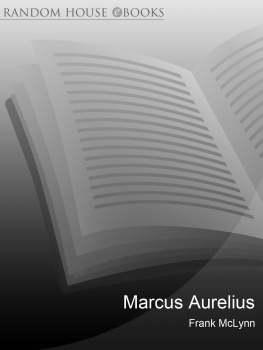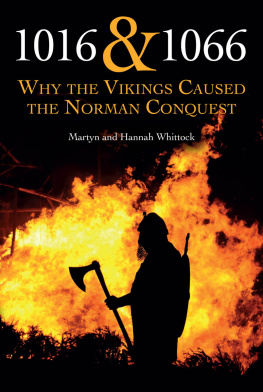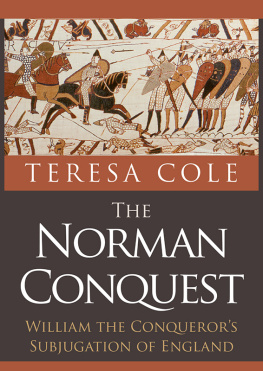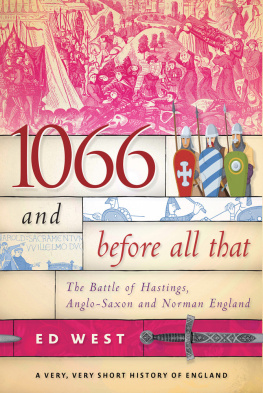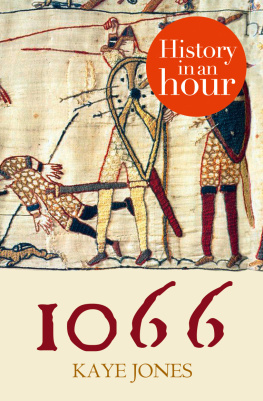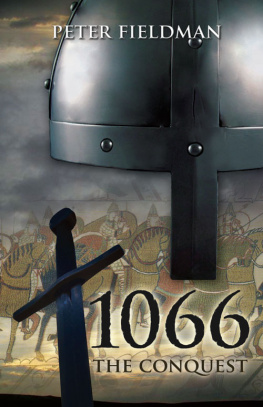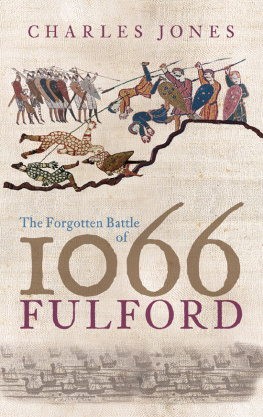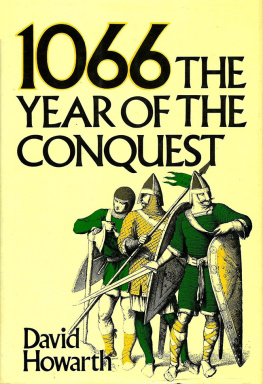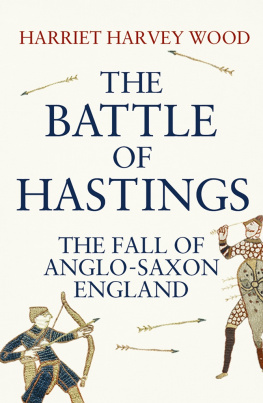Contents
About the Author
Frank mclynn was educated at Wadham College, Oxford, and the University of London. He was Alistair Horne Research Fellow at St Antonys College, Oxford, in 198788, and is currently Visiting Professor in the Department of Literature at Strathclyde University. A full-time writer, he is the author of biographies of H.M. Stanley and Richard Burton, as well as several books relating to the Jacobite movement, including Charles Edward Stuart , which was shortlisted for the 1989 McVities Prize for Scottish Writer of the Year, and The Jacobite Army in England , which won the 1985 Cheltenham Prize for Literature. His most recent books are Hearts of Darkness: The European Exploration of Africa, Robert Louis Stevenson (both available in Pimlico), Fitzroy Maclean, Carl Gustav Jung , which was shortlisted for the 1997 NCR Award, and Napoleon (also available in Pimlico).
Illustrations
. Edward the Confessor, detail from the Bayeux Tapestry, by special permission of the City of Bayeux
. Silver penny of Harold, minted at Chichester The British Museum, London
. Seal die of Godwin the thegn The British Museum, London
. Anglo-Saxon sword from the River Whitham, Lincs., 10th11th century The British Museum, London
. Theophilus with his Varangian Guard outside the church of Blachernae, Scylitzes Chronicle, folio 43v., 11th century Biblioteca Nacional, Madrid/Werner Forman Archive
. Detail showing Yaroslav the Wise from the icon of St Boris and St Gleb, c.1590, Stroganov School, Moscow
. Danish Penning of Svein Estrithson (104775) University of Oslo
. Altar frontal of St Olaf, c.1200 from Trondheim Cathedral University of Oslo
. Viking picture stone from Gotland, C.700800 Antikvarisk-Topografiska Arkivet, Stockholm
. The Gokstad Ship, 9th Century Viking Ship Museum, Bygdoy/Werner Foreman Archive
. Viking Armour, c.850 University of Oslo
. Seal of William the Conqueror British Library, London
. Norman knights it was said they could knock down the walls of Jericho
details from the Bayeux Tapestry, by special permission of the City of Bayeux
Details from the borders of the Bayeux Tapestry decorate the first page of each chapter and are reproduced by special permission of the City of Bayeux. Photographs for chapters 1,3 & 9 AKG, London.
For Colette
1066
The Year of the Three Battles
Frank McLynn

Introduction
FOR FIVE HUNDRED years, until the middle of the fifth century AD, the Roman empire guaranteed stability in the Western world through the pax romana. When the empire fell apart (the last Roman emperor who could trace continuity from Augustus was Romulus Augustus, deposed in 476), the centre of gravity shifted to Byzantium, the city on the site of modern Istanbul founded by the emperor Constantine in 332. Despite attempts to revive the western Roman empire, most notably under Charlemagne at the end of the eighth century, the centre of gravity in the West, the cultural hinge on which everything turned, was Byzantium; western Europe itself for the most part remained a collection of petty kingdoms and principalities.
Two great seismic events broke up this basic pattern. From the middle of the seventh century, the great new religion of Islam was on the march, and within one hundred years had reached the Pyrenees. One hundred and fifty years later the Vikings erupted from their Scandinavian fiords and cut a swathe through northern Europe: such was the fear and devastation they spread that the old English prayerbook contained the plea A furore Normannorum libera nos, Domine (Lord, deliver us from the wrath of the Norsemen). Between them, the Vikings, pressing on France and northern Europe from the north, and the Islamic nations, pressing up through Spain from the south, bade fair to squeeze western Europe out of existence.
Once again the key was Byzantium. It was the Byzantine empire that provided the main line of defence against the encroachment of Islam, and it was the Byzantines who co-opted the Vikings into trading partners, so that the Scandinavian settlers in Russia and the Ukraine (the Rus ) provided a crucial transmission belt between the Mediterranean and the Baltic Sea, North Sea and the Atlantic. In concentrating on a story that involves mainly England, France and Norway, we should not forget that the dramatic events of 1066 took place in a much broader context. In Sicily Byzantines, Normans and Arabs confronted each other; in Spain ferocious wars went on between Christian kings and Moorish emirs (Rodrigo Diaz of Vivar, el Cid, was an almost exact contemporary of William the Conqueror); and in the Atlantic the Norsemen had settled Iceland and Greenland and reached the shores of North America.
The three main characters in my triple biography were all great men, to use a term that has fallen out of fashion. William of Normandy was the most cunning of the three, Harold Godwinson the most courageous and Harald Hardrada the most flamboyant. But they were not Prometheans: they could not perform deeds that were precluded by the technologies and economies of the age; they made history but not in circumstances of their own choosing. If at times we must immerse our heroes in the socio-economic milieu that produced them, this is partly because true biography is not possible for personages so remote in time, for whose lives the sources are so suspect, and partly to underline the fact that, considering the constraints each of them worked under, their achievements finally emerge as even more remarkable than we thought before.

Britain in 1066
Edward the Confessor

THE ENGLAND ON which invaders began to cast covetous glances in the early 1060s had for twenty years enjoyed an unwonted period of relative calm and prosperity. But the fifty years 9951045 had seen England in a turbulent condition, preoccupied with the Scandinavian question. The key crossover point from the fairly tranquil tenth century to the violent early eleventh was the reign of Ethelred, known as the Unready, who was king from 978 until 1013. Whereas the reign of Ethelreds father, Edgar, had been a peaceful golden age, his own was a miasma of warfare, conquest and uncertainty. Viking raids had been a factor in English life ever since the first terrible appearance of the Northmen at Lindisfarne in 795, but in Ethelreds reign Norse raids resumed, this time much more formidable both in degree and kind.
During the second Viking age the Anglo-Saxon Chronicle recorded a series of raids of ever increasing ferocity by Norsemen seeking treasure and loot rather than a land on which to settle. In 980 there were attacks on Southampton, Thanet and Cheshire; in 981 Devon and Cornwall were the main focus of the Northmens incursion; in 982 Dorset was ravaged and London itself put to the torch. In 991 one of Ethelreds ealdormen (the tenth-century equivalent of the eleventh-century earl) finally gave battle to the Norwegians under their famous king Olaf Tryggvason but were utterly defeated in a battle at Maldon in Essex immortalized by one of the most famous exemplars of heroic poetry.
After the defeat at Maldon Ethelred bowed to the seemingly inevitable and took the advice Olaf Tryggvasons herald had given ealdorman Byrhtnoth before the battle: Bold seamen have sent me to you and told me to say that you must send treasure quickly in return for peace, and it will be better for you all to buy off an attack with treasure, rather than face men as fierce as us in battle. We need not destroy each other, if you are rich enough. In return for gold we are ready to make truce with you.
Next page

